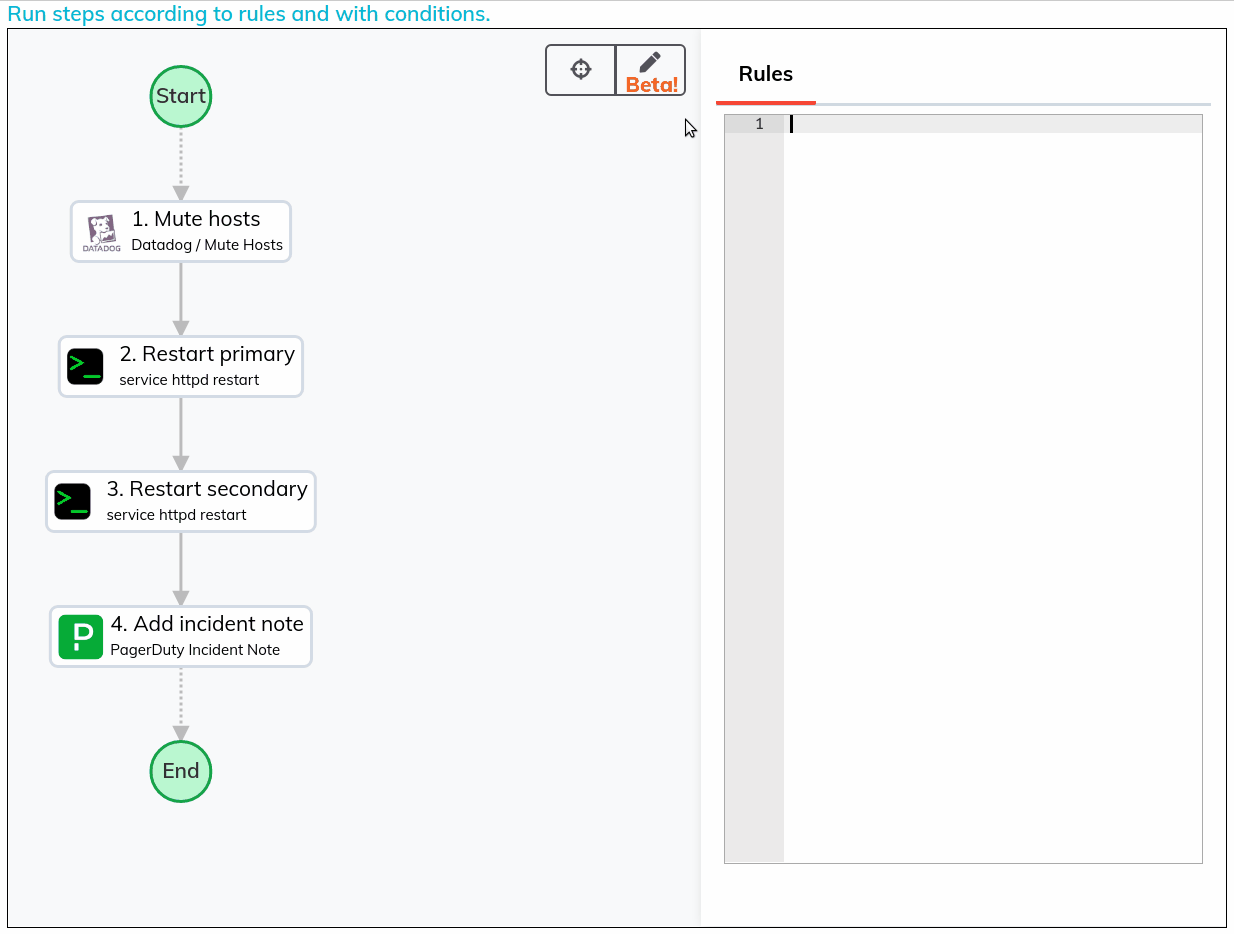# Ruleset Workflow Strategy Plugin
Available in Rundeck Enterprise
TIP
The 3.4.4 release of Rundeck Enterprise includes updates to our incubating feature for visualizing the workflow strategy.
The Ruleset Workflow Strategy allows Enterprise users to provide more complex logic around job step execution. To use the Ruleset Strategy choose Ruleset on the Workflow tab when editing a Job.

# Writing Rules
# Syntax
Rules define how each step should run. You can add one rule per-line. Rules are additive, and you can define multiple rules for each step. Rules are in the form:
STEP [directive] [conditions...]
This indicates which step or steps the rule applies to, and any directives or conditions for the step. The rule must have a directive or condition, or both.
# Step
Specifies the step, or steps that the rule applies to. You must include the [ and ] characters:
[X]: Applies to a single step, the named or numbered step X. You can use the step number, e.g.[1]or the label, e.g.[Deploy QA](case sensitive).[X,Y,Z...]: Applies to multiple steps. Separate multiple steps with a comma, e.g.[1,2,3][1-3]: Applies to steps 1 through 3[1-3,5-7]: Applies to steps 1 through 3 and 5 through 7[*]: Applies to all steps
# Directive
Directives optionally define when a step should start. You can define a directive rule for all steps [*] using run-at-start or run-in-sequence.
run-at-start: Run at workflow start time. The indicated steps will start immediately when the workflow starts.run-in-sequence: Run after the previous step in sequence is run or is skipped.run-after:X[,Y[,Z..]]: Run after one or more steps run or are skipped.
WARNING
Step Numbers and Names can be used on run-after:[], but in the case that the Step Name includes spaces, this condition must be encapsulated in double quotes, e.g. [Step Two] "run-after:Step One"
# Conditions
Conditions can define additional checks that must pass before a step can run, or determine when a step can be skipped. For example:
if:expressionunless:expression
expression defines a comparison or match that will be checked. Valid expressions are:
key.name==string: a context variable such as option.myoption has a certain valuekey.name!=string: not-equal checkkey.name=~pattern: regular expression matchkey.name!~pattern: negative regular expression match!key.namecontext: variable is unsetkey.name>=number: greater than or equal to checkkey.name<=number: less than or equal to checkkey.name>number: greater than checkkey.name<number: less than check
Note: Curly braces are not needed to reference context variable key names.
# Examples
Run steps 2 and 5 only after step 1 is done:
[2,5] run-after:1
Choose between 5 and 6 based on an option value:
[*] run-in-sequence
[5] if:option.env==QA
[6] unless:option.env==PRODUCTION
Run step 1, then steps 2 and 3 in parallel, then step 4:
[2] run-after:1
[3] run-after:1
[4] run-after:2,3
Run steps only if two different conditions are met:
[1] run-in-sequence
[2] if:option.1=yes if:option.2=yes
[3] if:option.1=yes if:option.2=no
[4] if:option.1=no if:option.2=yes
[5] if:option.1=no if:option.2=no
Based on the ruleset defined above, if option 1 is "yes" and option 2 is "no" then job step 3 would run after 1. If option 1 is "no" and option 2 is "yes" then job step 4 would run after 1.